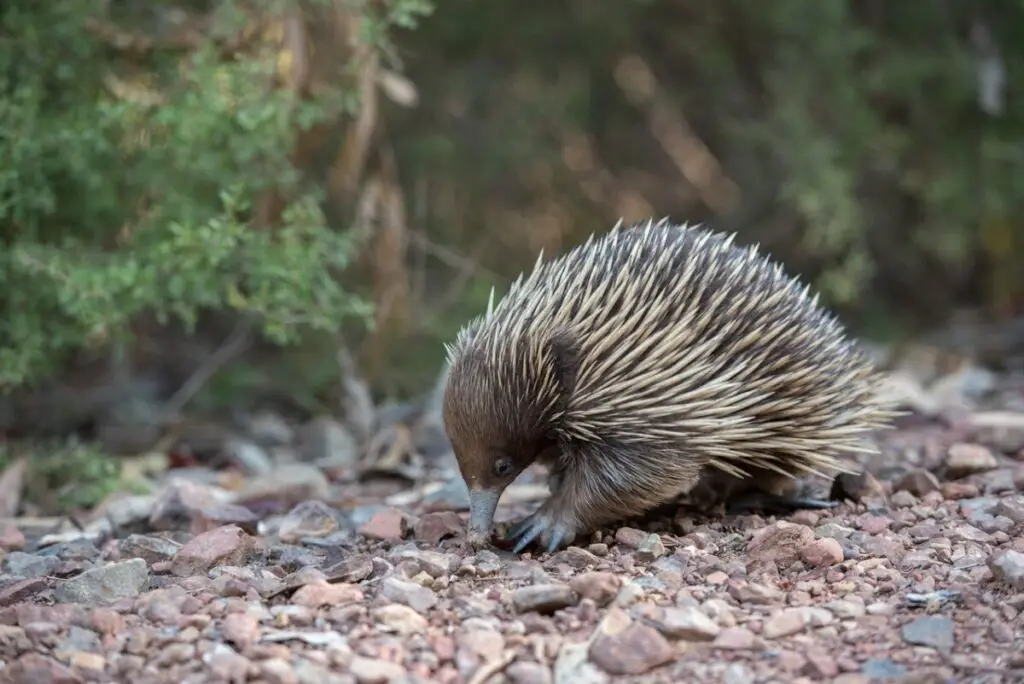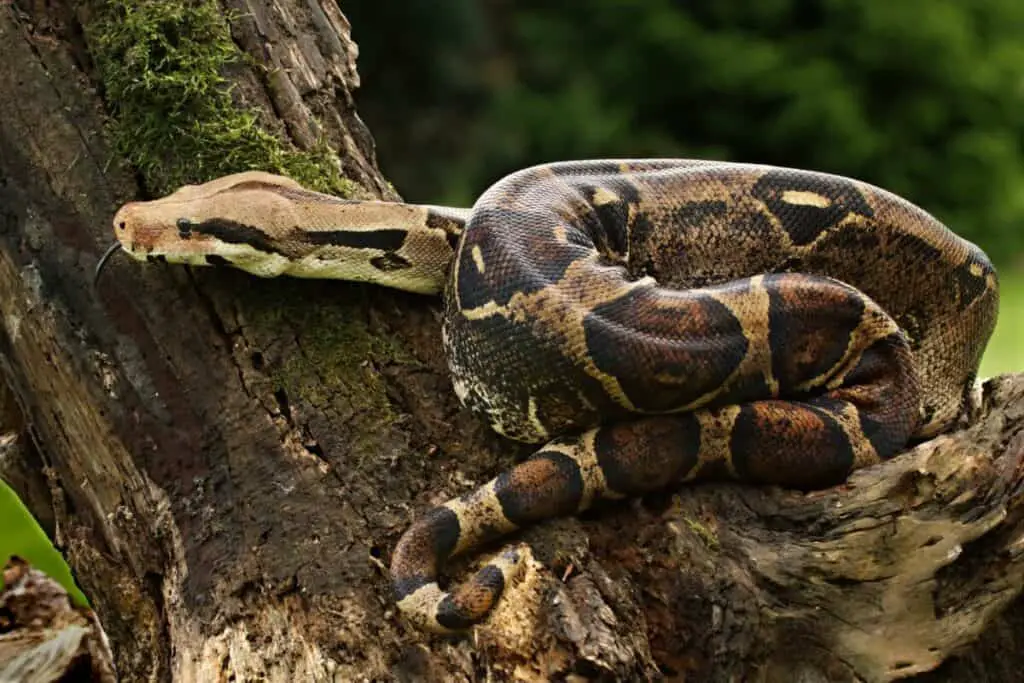Echidnas, also known as spiny anteaters, are small and solitary mammals that are native to Australia and New Guinea. These creatures have a unique appearance with their long snouts, sharp claws, and dense fur covered in spines.
Despite being popularly associated with cartoons and children’s books, echidnas play an important role in the ecosystem by consuming large amounts of insects and helping to maintain soil health through digging.
However, like every other animal species on earth, echidnas too have natural predators that pose a threat to their survival. While these animals may seem well-protected against most threats due to their tough exterior of quills and spikes, there exist several predatory species that can still prey upon them successfully.
This article aims to explore the various predators of echidna found across its range and understand how they impact the population dynamics of this unique mammal.

The Importance Of Echidnas In The Ecosystem
Echidnas, also known as spiny anteaters, play a vital role in the ecosystem. These unique mammals are found only in Australia and New Guinea, where they inhabit a variety of habitats such as forests, grasslands, and deserts.
Echidnas are insectivores that feed on ants and termites using their long sticky tongues. They have no teeth but use their powerful jaws to crush their prey. Apart from controlling termite populations, echidnas also contribute significantly to pollination by feeding on nectar-producing plants.
As they move from one plant to another in search of food, echidnas inadvertently spread pollen grains across different flowers resulting in cross-pollination – an essential process for maintaining genetic diversity in plant species. Furthermore, echidna droppings contain seeds that help replenish vegetation growth in areas with depleted soil nutrients.
Overall, these small creatures play crucial roles in preserving ecological balance and sustaining biodiversity within their respective ecosystems without which many plant species may become endangered or extinct.
The Unique Physical Characteristics Of Echidnas
Echidnas are fascinating animals that play a vital role in the ecosystem. These spiny creatures have unique adaptations for survival, including their ability to dig efficiently using their powerful front claws and snouts. They also possess a keen sense of smell, which they use to locate food such as insects and other small invertebrates.
One of the most remarkable features of echidnas is their unique sensory abilities. Their long snouts contain electroreceptors, allowing them to detect electrical impulses generated by muscle contractions in prey animals. This enables them to hunt even in complete darkness or underground where vision would be useless.
Additionally, echidnas have excellent hearing and can detect sounds at low frequencies beyond human auditory range.
To survive in the wild, echidnas must contend with a variety of predators. Some common predators include dingoes, foxes, eagles, snakes, and feral cats. However, these animals are often deterred by the echidna’s sharp spines and its ability to curl up into an impenetrable ball when threatened.
Despite these adaptations for defense, habitat loss due to human activity poses one of the greatest threats to echidna populations worldwide.
The Defense Mechanisms Of Echidnas
The echidna is a solitary animal that has adapted several strategies to avoid predation.
Adaptive features of the echidna include its spiny coat, which acts as an effective deterrent against predators. When threatened, they curl up into a ball with their spines facing outwards, making it difficult for predators to attack them. The strong muscles that enable this defensive posture are another feature that helps protect the echidna from potential attackers.
In addition to these physical adaptations, echidnas have developed behavioral patterns to help deter predators. They often remain motionless when approached by a predator, relying on their camouflage and spines to keep them safe. If the predator does not leave, echidnas may dig themselves into the ground or use nearby vegetation as cover until the threat has passed.
These adaptive features and behavioral patterns make the echidna well-suited for survival in its environment despite being preyed upon by animals such as dingoes and large birds of prey.
Giant Anteaters’ Predators Exposed: Unmasking the Threats

Natural Predators Of Echidnas In Australia
Having explored the defensive mechanisms of echidnas, it is important to understand their natural predators in Australia.
Echidnas are solitary animals and spend most of their time foraging for food on the ground or hiding in burrows. Despite their spiky exterior, they do have several natural predators that pose a threat to them.
Dingoes, foxes, eagles, and large reptiles such as goannas are some of the common predators of echidnas in Australia. These predators play an essential role in maintaining balance within the ecosystem by keeping populations under control.
However, echidnas have developed unique survival strategies to evade these threats. When threatened by a predator, echidnas can curl into a ball with their spines pointing outwards to deter attackers. They also use their strong forelimbs to dig themselves into the ground quickly and effectively hide from danger.

Natural Predators Of Echidnas In New Guinea
New Guinea is home to a diverse range of predators that hunt for their food. Echidnas, being one of the many animals in this region, have not escaped the attention of these hunters. Echidna habitat plays an important role in determining which predators are capable of preying on them.
The natural predators of echidnas in New Guinea include birds of prey such as eagles and hawks, snakes like pythons and boas, feral dogs, and humans. These animals use different hunting habits depending on their size and physical characteristics.
For instance, birds of prey use their sharp talons to grab echidnas from the ground while snakes rely on stealth to surprise them. Dingoes and other canids chase after echidnas until they tire out and become vulnerable to attack. Lastly, human activities such as deforestation have led to increased encounters between people and echidnas resulting in accidental injury or death through vehicle collisions or capture for consumption purposes.
Threats To Echidna Populations
Echidnas are not only threatened by natural predators, but also face significant threats from human interference.
Habitat loss is the primary threat that echidnas face in many parts of their native range. The clearing of forests and other natural habitats for agriculture or urbanization has resulted in a reduction of available habitat for these animals.
As a result, echidnas are increasingly coming into contact with humans and domesticated animals, exposing them to new dangers such as road traffic accidents and predation by dogs.
In addition, illegal hunting for meat or fur poses another risk to this species.
Therefore, conservation efforts focused on reducing habitat loss and improving public awareness about the importance of protecting echidnas from human interference are crucial to ensure the survival of these unique creatures.
Conservation Efforts For Echidnas
Despite being one of the oldest surviving mammals, echidnas face a number of predators in their natural habitats. These include foxes, dingoes, snakes and birds of prey such as eagles.
In addition to these natural threats, human activities have also led to habitat loss and fragmentation which can impact on the survival of echidna populations.
Echidnas are found throughout Australia and New Guinea where they inhabit a range of environments including forests, grasslands and deserts. However, with increasing urbanisation many areas of potential echidna habitat have been cleared for agriculture or development projects.
This has not only reduced the amount of suitable habitat available but has also fragmented remaining habitats making it difficult for echidnas to move between patches in order to find food or mates. As a result, conservation efforts for this species must take into account both natural predation as well as impacts from human activity if we hope to ensure their long-term survival.
Conclusion
Echidnas are fascinating animals that play a critical role in the ecosystem.
Their unique physical characteristics and defensive mechanisms make them well-adapted to their environment, but they still face threats from natural predators such as dingoes and birds of prey in Australia, as well as large snakes and crocodiles in New Guinea.
Additionally, habitat loss due to human activities poses a significant threat to echidna populations.
Conservation efforts for echidnas involve protecting their habitats, raising awareness about their importance in the ecosystem, and studying their behavior to better understand how to protect them.
